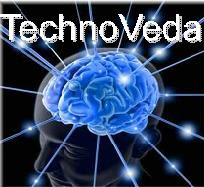Advanced research and developments in semiconductor electronics is ramping up its applications in every stream of life. Once the TVs looked like big cubical boxes, which was heavy and large in size. Today we talk about thin “Plasma” or “LCD” display screen, which are about 25mm in thickness, also there is a buzz about LED TVs even though they are not released commercially yet all over the world.
The technology incorporated in LED TVs can have revolutionary impact as the power consumption is expected to reduce drastically compared to its predecessors. Actually LED TVs work on same principle as well known LCD display TVs, but in the former LEDs are used to light the screen instead of conventional incandescent source.
There are two different ways to light up screen, it can be lit either from back or from side (Edge). Both these techniques have their own advantages and disadvantages. If the screen is lit from backside then we can get highly effective contrast in pictures with compromise on thickness of screen. Where as if Edge lighting is used then contrast effect may reduce with advantage of thin screen. Also some limitations arise, as cost becomes major consideration in practical applications. The entire screen having around 2million pixel is lit with mesh of just 1000 LEDs in case of Back lighting. With increase in number of LEDs no doubt we get better quality picture but cost also shoots up rapidly not only because of LED count but also due to the complexity involved in control circuit of LED mesh. Theoretically speaking each pixel should have independent LED in which case LCD screen itself may be eliminated and entire picture can be formed using LEDs itself.
Back LED lighting LCDs
In this technology the LED mesh is placed exactly behind the LCD screen as can be seen in the picture, and a group of LEDs is switched ON depending on the picture required. Controlling the lighting of each LED independently is very complicated process. As LEDs are backside leakage of light on dark pixel is very less because of which we get very sharp contrast. In the backlight simulation slide (middle) we can see that the brightness of screen at different parts is varied depending on which LCD displays the picture.
The clarity of the screen also depends on the LED density and controlling ability of circuitry attached. Presently optimum density is maintained in spite of which the cost of this type of TVs is around 25% more than fluorescent lamp lit LCD TVs.
Edge LED TV
Another way of lighting the screen is edge lighting in which the LEDs are placed along the periphery of the screen and intensity and brightness of pixel depends upon the intersection of vertical line LED and horizontal line LED.
In this type of technology the contrast is not as sharp as previous one due to leakage of light (Light incident on other pixels than intended one) to the adjacent pixels. But at the same time the thickness of screen becomes very thin.
Source: http://www.technoveda.net





